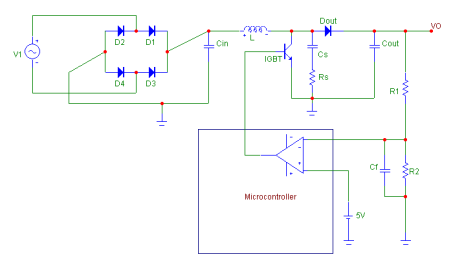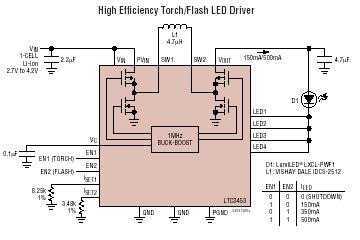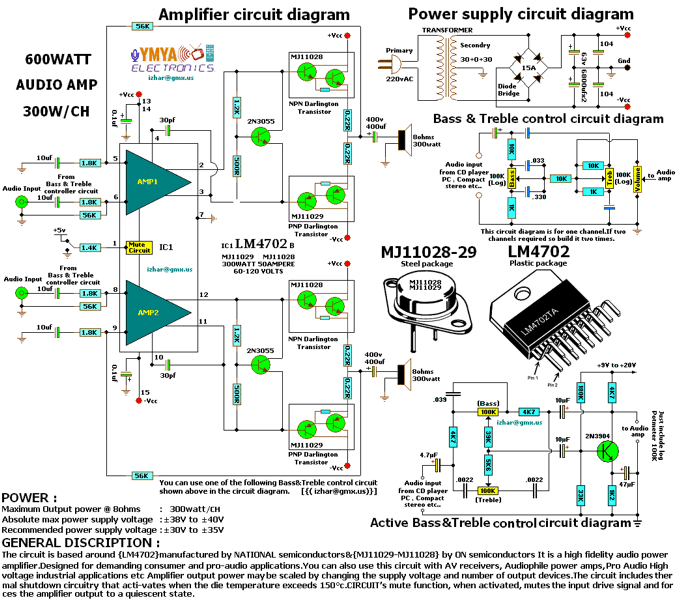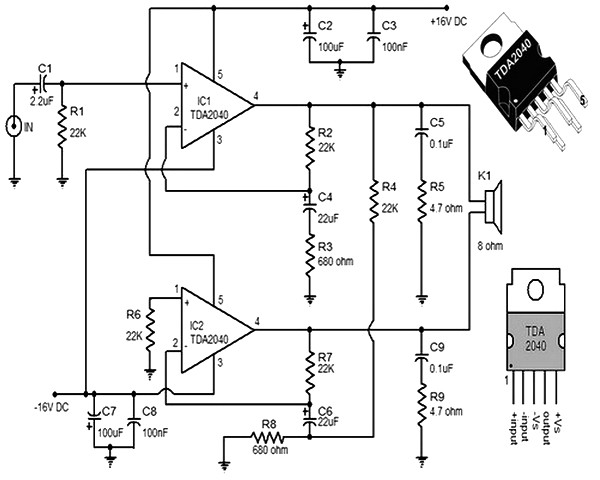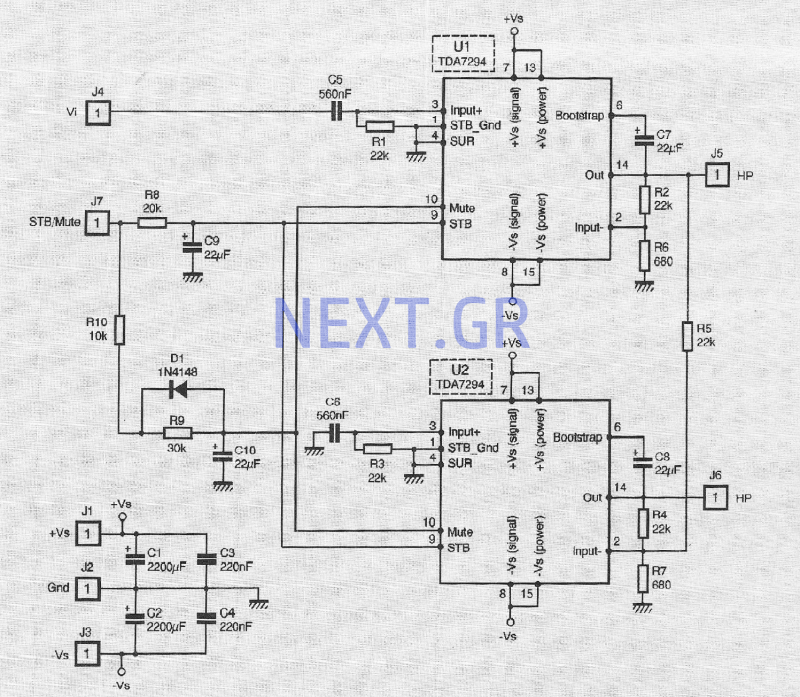
13.8V 20A power supply
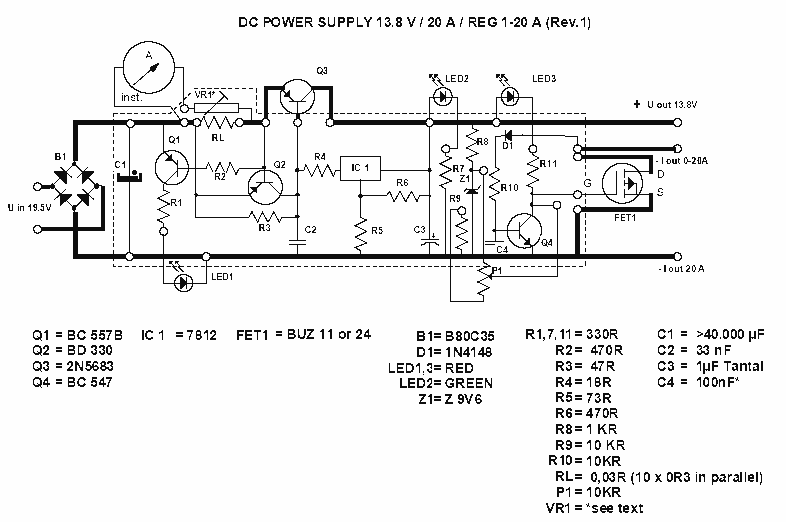
This PSU has been especially designed for current-hungry ham radio transceivers. It delivers safely around 20Amps at 13.8V. For lower currents, a separate current limiting output, capable of 15ma up to a total of 20A has been added. Let us see what we have got here. The power transformer should be capable to deliver at least 25A at 17.5 to 20V. The lower the voltage, the lower power dissipation.
The power supply unit (PSU) described is specifically engineered to meet the demanding power requirements of ham radio transceivers, which often require substantial current for optimal performance. The PSU is designed to deliver a nominal output of 20 Amps at a regulated voltage of 13.8 Volts, which is a standard voltage level for many radio applications.
To accommodate varying current needs, the PSU includes a separate current-limiting output. This feature allows for a maximum output of 15 milliamps while maintaining the overall capacity of 20 Amps. This current-limiting capability is particularly useful for powering auxiliary devices or circuits that require lower currents without risking overload on the main output.
The design necessitates a robust power transformer capable of delivering at least 25 Amps at a voltage range of 17.5 to 20 Volts. This specification ensures that the transformer can handle peak loads while providing sufficient headroom to prevent overheating and to enhance reliability.
In terms of thermal management, the design principle states that lower output voltages will lead to reduced power dissipation within the unit. This is an important consideration as it directly affects the efficiency and thermal performance of the PSU, ultimately contributing to the longevity of the components used.
Additional components such as filtering capacitors, voltage regulators, and protection circuits would typically be integrated into the PSU design to ensure stable operation, minimize ripple voltage, and protect against over-voltage and short-circuit conditions. The overall design must adhere to safety standards to ensure reliable operation in the field, especially in environments where equipment may be subject to electrical noise and fluctuations.
In summary, this PSU is a well-rounded solution for powering ham radio transceivers, with features that enhance both performance and safety, making it suitable for the demands of amateur radio enthusiasts.This PSU has been especially designed for current-hungry ham radio transceivers. It delivers safely around 20Amps at 13.8V. For lower currents, a separate current limiting output, capable of 15ma up to a total of 20A has been added. Let us see what we have got here. The power transformer should be capable to deliver at least 25A at 17.5 to 20V. The lower the voltage, the lower power dissipation. 🔗 External reference
The power supply unit (PSU) described is specifically engineered to meet the demanding power requirements of ham radio transceivers, which often require substantial current for optimal performance. The PSU is designed to deliver a nominal output of 20 Amps at a regulated voltage of 13.8 Volts, which is a standard voltage level for many radio applications.
To accommodate varying current needs, the PSU includes a separate current-limiting output. This feature allows for a maximum output of 15 milliamps while maintaining the overall capacity of 20 Amps. This current-limiting capability is particularly useful for powering auxiliary devices or circuits that require lower currents without risking overload on the main output.
The design necessitates a robust power transformer capable of delivering at least 25 Amps at a voltage range of 17.5 to 20 Volts. This specification ensures that the transformer can handle peak loads while providing sufficient headroom to prevent overheating and to enhance reliability.
In terms of thermal management, the design principle states that lower output voltages will lead to reduced power dissipation within the unit. This is an important consideration as it directly affects the efficiency and thermal performance of the PSU, ultimately contributing to the longevity of the components used.
Additional components such as filtering capacitors, voltage regulators, and protection circuits would typically be integrated into the PSU design to ensure stable operation, minimize ripple voltage, and protect against over-voltage and short-circuit conditions. The overall design must adhere to safety standards to ensure reliable operation in the field, especially in environments where equipment may be subject to electrical noise and fluctuations.
In summary, this PSU is a well-rounded solution for powering ham radio transceivers, with features that enhance both performance and safety, making it suitable for the demands of amateur radio enthusiasts.This PSU has been especially designed for current-hungry ham radio transceivers. It delivers safely around 20Amps at 13.8V. For lower currents, a separate current limiting output, capable of 15ma up to a total of 20A has been added. Let us see what we have got here. The power transformer should be capable to deliver at least 25A at 17.5 to 20V. The lower the voltage, the lower power dissipation. 🔗 External reference

